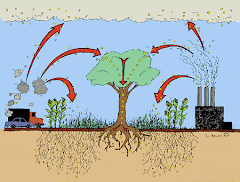Kansas' governor vetoes power plant permit (03/24/2008)
Debra Kahn, ClimateWire reporterKansas' fight over two coal-fired power plants is intensifying, raising the possibility of multi-state battles over such plants unless the federal government steps in with greenhouse gas emission regulations.
Gov. Kathleen Sebelius (D) vetoed a bill Friday that would have reversed the denial of two coal-fired power plants. In addition to vetoing the bill, she created a state Energy and Environmental Policy Advisory Group to examine ways Kansas can reduce its greenhouse gas emissions.
The Kansas Department of Health and Environment denied the plants' air quality permits in October, citing the potential damage caused by global warming. The two 700-megawatt plants proposed by Sunflower Electric Power Corp. would be located in Holcomb, next to an existing plant.
In response, state legislators filed and speed-tracked bills in both the House and Senate to overturn the state's decision. The bills argue that the state agency went outside its scope in taking CO2 emissions into account in denying the permits. Sunflower says it followed existing state rules. It also argued appeals before two state courts in November, one of which is now pending before the state Supreme Court.
Kyle Nelson, Sunflower's vice president of power production and engineering, said his interpretation of the law was the same as U.S. EPA's. A provision in the Clean Air Act allows EPA to act to prevent imminent health threats from pollution sources, but that provision is meant only for existing emissions sources for which sudden, new information is revealed, Nelson said. What Kansas did "had the effect of creating new law outside the legislative effort," he asserted.
The bill "acknowledges greenhouse emissions are a global problem and a patchwork of individual state rules are likely only to lead to inconsistency in application, and a more holistic approach is appropriate," Nelson said.
Kansas says it is following the Supreme Court's decision
Kansas is citing last April's Massachusetts v. EPA decision as a precedent for its opposition. In testimony to the House Select Committee for Energy Independence and Global Warming earlier this month, Rod Bremby, who heads the Kansas health agency, said the decision that greenhouse gases are an air pollutant subject to the Clean Air Act was "highly influential."
Furthermore, Bremby testified, EPA's failure to decide whether CO2 contributes to air pollution is limiting Kansas' ability to address emissions. "It would make sense from both a human health and business perspective for EPA to issue its regulations as quickly as possible," he said.
Federal politicians, in turn, are using Kansas' decision as fodder against EPA; committee Chairman Ed Markey (D-Mass.) hailed Bremby and Kansas state Rep. Joshua Svaty (D) as "climate heroes."
"Unlike the EPA administrator, who still can't seem to accept the scientific consensus and declare that greenhouse gas emissions are dangerous, Kansas used its own state authority to deny a permit for a new coal-fired power plant on just those grounds," Markey said.
In her veto, Sebelius offered Sunflower a compromise: one power plant of about 660 MW, equipped with carbon capture and sequestration technology, for which Kansas' baseload power needs would receive top priority. Sunflower officials did not respond to a request for comment but said in a statement that "this veto will unnecessarily raise electric rates for Kansas families and punish our Kansas workers and industries."
The supply's side
"Lots of people have attacked us based on, 'You want to build a coal plant because you're greedy and you want to make a profit,'" Nelson said. "That's a great story, but we're a co-op and don't operate for profit. There is no shareholder that we're answering to that has a profit motive. We have no fuel bias, we don't want to build coal forever."
"Just because we want to build a coal plant doesn't mean we don't like windmills or natural gas," he said. "They see it like a beauty contest -- they want to pick the one prettiest girl. I say it's like drafting a sports team: If you already have a point guard, you need a center."
Sunflower said its opposition was mainly in the form of 501(c)(4) groups funded by generators of other forms of energy, like Know Your Power, a coalition organized by natural gas company Chesapeake Energy Corp.
A spokesman for Know Your Power's ad agency, Corporate Communications Group, said the group has run a few print, television and Internet commercials aimed at the Holcomb plants.
"It's been an interesting dogfight," said spokesman Michael Grimaldi. "There are a lot of organizations that have a dog in this fight and are contributing to it in different ways."
Another group, Great Plains Alliance for Clean Energy, is funded by wind power interests. Its primary target is the Holcomb project, but it also features articles maligning biomass and other alternative energies.
Grimaldi said Know Your Power was pleased with Sebelius' decision but that the compromise proposal was "not something we've talked about in our team meetings."
What's next?
While Kansas' legislative session ends April 5, a session where lawmakers can try to override Sebelius' vetoes begins April 30. In the state House, the votes have fallen short of a two-thirds majority.
But another bill to allow Sunflower to build its plants may be in the works. According to a report by Harris News Service, the bill might include mandates for Sunflower to report its emissions and pledge to reduce them. Sunflower spokesman Miller pledged to continue the fight as well. "We'll be here till this place closes down," he said.





